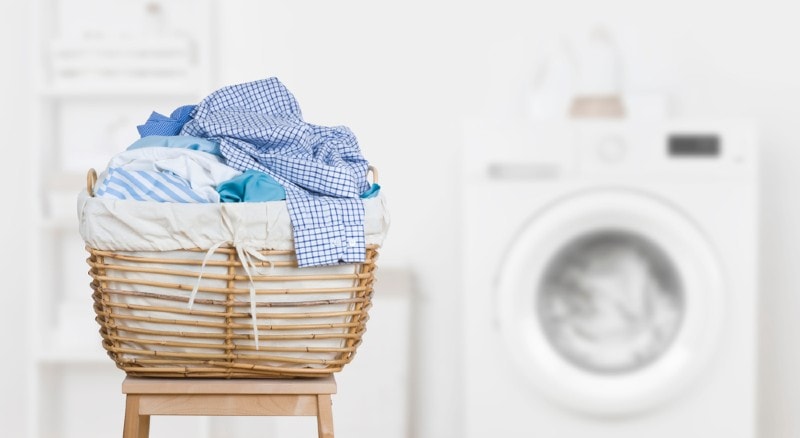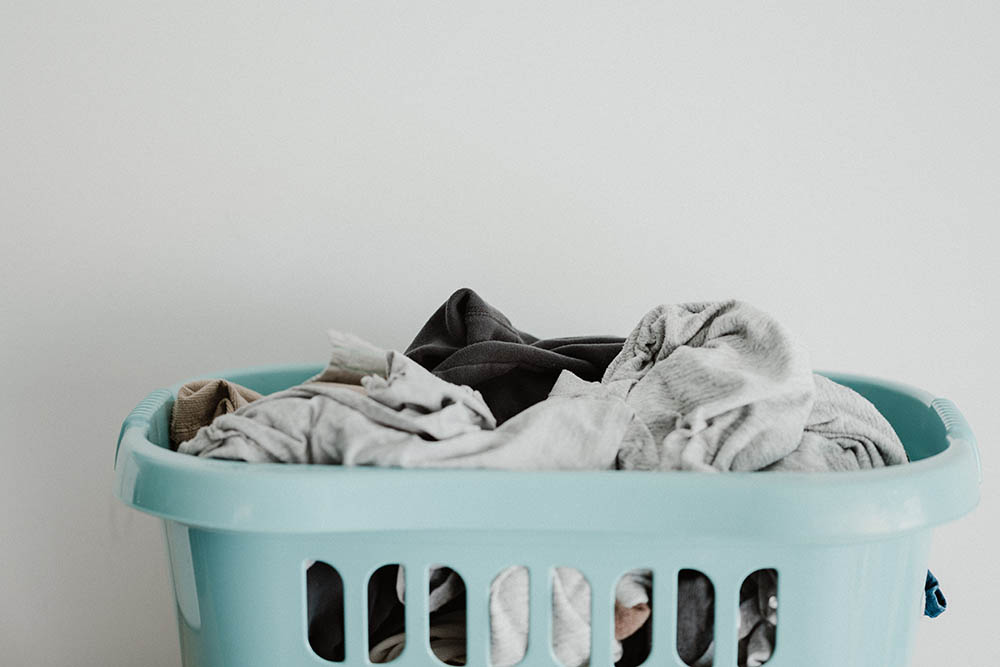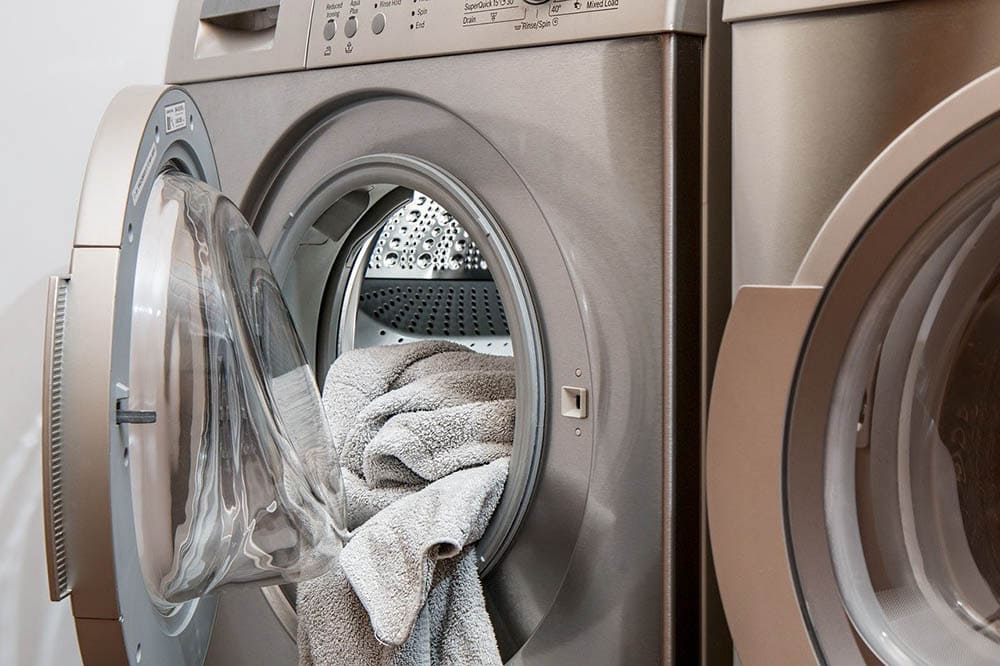Do You Really Need to Sort Your Laundry By Color? 4 Key Reasons
-
Pete Ortiz
- Last updated:

To some people, sorting out clothes before washing them is meditative while others find it completely unnecessary. The big question that this difference in opinion prompts is: Do we really need to sort our laundry? Well, the short answer is yes!
Mixing your wash load doesn’t cause any serious damage to them but it quickens the fading rate and makes them look dingy and worn out. Stay put as we guide you through how to sort laundry colors. In addition, we focus on other issues that surround sorting laundry, such as consequences of not doing it.
The 4 Key Reasons Why You Need to Sort Laundry By Color
There are several reasons why we should sort our laundry, including the following:
1. To Keep Colored Clothes From Ruining the Light or White Ones
It’s essential to sort laundry if you don’t want the colored clothes bleeding their dye into the white ones. For example, if you have ever washed a red sock with a white shirt, you probably ended up with a pink dress shirt. This is why it’s important to take laundry sorting seriously.
Separating laundry by color reduces the risk of the dark-colored items transferring their dye to lighter-colored items. As such, it saves you from the “oops” moments while ensuring your clothes maintain their original bright colors.

2. To Extend the Life of the Clothes
According to AspenClean¹’s President and Co-CEO, Alicia Sokolowski, sorting out laundry maintains the best condition of clothes over a long time. Taking into note that different fabric types require different approaches when washing, it is important to separate them by the material first.
By doing so, you can wash different cloth materials according to their instructions. For instance, some clothes need to be bleached while others cannot be tumble-dried. While some laundry such as towels and sheets tolerate high temperatures, others, like pullovers and dark-colored items, are better off in cold or warm cycles. You can find such instructions on their labels or under the collar.
3. To Prevent Abrasive Cloth Materials From Ruining Soft Clothes
Laundry sorting helps prevent the more abrasive cloth materials¹ from ruining the soft and more delicate ones. For instance, it’s unwise to wash items like zippers, jeans, and towels with vests. Also, a wool sweater is delicate while a lace camisole is abrasive, meaning they don’t belong in the same laundry batch.
If you forfeit this instruction and wash soft and abrasive items together, you can be certain that the soft and more delicate items will tear off and appear dingier gradually. The fabrics will also stretch and shrink more rapidly, thus shortening their lifespan.
4. For Sanitizing Reasons
Some clothes such as dirty socks and funky sports uniforms could use a little sanitizing during washing. This reason makes it important to sort out laundry because it is recommended to keep items like nylon shirts and bed sheets away from bleaching agents like baking soda and vinegar.
How to Sort Laundry by Color
- If you are especially new to doing laundry, or it’s the first time you are washing new clothes, we advise reading the care label first. Doing this will familiarize you with the optimum water temperature levels, laundry cycle, and how to dry your washed clothes.
- Sort your items into three piles: darks, lights, and bleach-safe. The “lights” load should consist of white, pastel, and light gray items only. Anything of a different color, such as navy, red, black, brown, or dark gray, should go into the dark pile. If the garments are labeled “dry-clean only”, it means they require special attention. You should pull them out from the hand-wash items to handle them separately.
- Go through each pile again, this time pulling out items by their fabric type. Separate all jeans and cotton shirts since they can’t be washed together with synthetics or other delicate clothes. You can place the delicates in a mesh laundry bag before tossing them into the washing machine. Such items include underwear, bras, and vests. Same way, separate lint-producing cotton items from microfiber materials like blankets to minimize pilling¹ and amount of lint.
- If you have any soiled or greasy garments, there’s one extra step you need to take: separate them. Doing so will prevent the dirt resulting from mud debris from re-depositing on your other fabrics. Also, you must separate muddy kids’ clothes from lightly soiled ones for more effective results.
- Wash and dry each pile separately. If you put all loads inside the dryer in one go, the light pieces will dry faster than the heavy ones. If they over-dry, the fabrics will be subjected to stress and eventually ruin them. On the contrary, heavier clothes may not dry well enough and the dampness will leave an unpleasant odor on your clothing.

What Happens If You Don’t Sort Laundry?
Failing to sort colored and light clothes will result in bleeding. When bleeding occurs, it means the colored items transfer their colored pigments to the white or light-colored clothes. Yellow clothes bleed the most amount of dye that causes stains on light clothes. The reason behind this points to sulfur, which is contained in large amounts in yellow pigments.
Furthermore, if you fail to sort your laundry by fabric type, you should expect the more abrasive garments like jeans to ruin synthetic items like underwear because of their rough texture. The effects can either be instant or long-term, but in the end, they contribute to a shorter lifespan.
Conditions That Can Affect Color Bleeding
Several washing conditions determine how fast unsorted clothes bleed. They include the following:
Type of Detergent Used
Bleeding intensity is hugely determined by the type of detergent used during the laundry process. Commonly, detergents have enzymes that help break down dirt and stains in clothes. Also, the same enzymes play a critical role in transferring color pigments from a colored item to a light-colored one. The more detergent you use, the more bleeding occurs.
Washing Temperature
Another factor that determines the intensity of color bleeding is the washing temperature. If it’s too high, the bleeding intensifies because the warm temperature easily activates the detergent. Its opposite is also true because, typically, soap doesn’t easily dissolve in hard water.
To reduce the bleeding intensity, it is advisable to use cold water. However, if you mix white and colored clothes, you should use warm water to activate the detergent quickly and control the intensity of color bleeding.
Washing Time
Did you know that clothes release more dye when you leave them to soak for too long? Yes – the longer you leave colored clothes soaking, the more the bleeding intensity. For this reason, it’s advisable to wash colored items as quickly as possible.

Can You Reverse the Damage Caused By Mixing Darks and Lights?
While it may not be possible to restore a ruined piece of clothing to its original state, there are several ways you can reduce the intensity of the damage. We look at them in the sections below:
Dried Stains
Cloth stains¹ are hard to remove but not impossible. If you have tried a stain remover but didn’t work, you should consider using it again. It makes more sense to soak the stained clothes first or use a more aggressive remover.
Alternatively, you can apply lemon juice and allow the cloth to dry in the sun. By working together, lemon and sun act as strong bleaching agents. Finally, rewash the garment before drying it again.
Shrunken Pullovers
As hopeless as it may seem, it is possible to reshape a sweater that shrunk after being washed with more abrasive fabrics. To do the restoration, put 2–3 spoonfuls of hair conditioner in a bucket of cold water. Soak the shrunken sweater in the water for 4–5 minutes and remove it.
Thereafter, lay it on a clean, dry towel and stretch the fibers gently. After the cloth has regained its shape, allow it to dry slowly on the towel. Your pullover should resume its previous shape permanently.
Dingy Whites
As mentioned previously, washing white fabrics with colored clothes can make them dingy. That is, you’ll notice yellowed spots on the white clothing. To fix such a problem, mix oxygen bleach and cool water by following the directions outlined in the package. Ensure the solution is enough to cover your dingy garments, then soak them overnight.
Thereafter, drain the solution and wash the clothing as you normally do. Repeat as necessary. If you don’t realize any results, you may have to use commercial color removers or whiteners.
Final Thoughts
Although the reasons for sorting laundry are manifold, some people, including some experts, argue that it is not that unnecessary. We found out that sorting clothes is essential because it extends their lifespan, prevents bleeding, and keeps rough fabrics from ruining synthetic materials.
To sort them perfectly, begin by separating the colored from white or light gray garments. Put away the ones labeled “bleach-safe” too. Thereafter, go through each pile and sort them by the type of fabric. If all the clothes in a pile are made of the same fabric type, they are safe to belong in the same batch. Good luck doing your laundry!
Featured Image Credit: Didecs, Shutterstock
Contents


